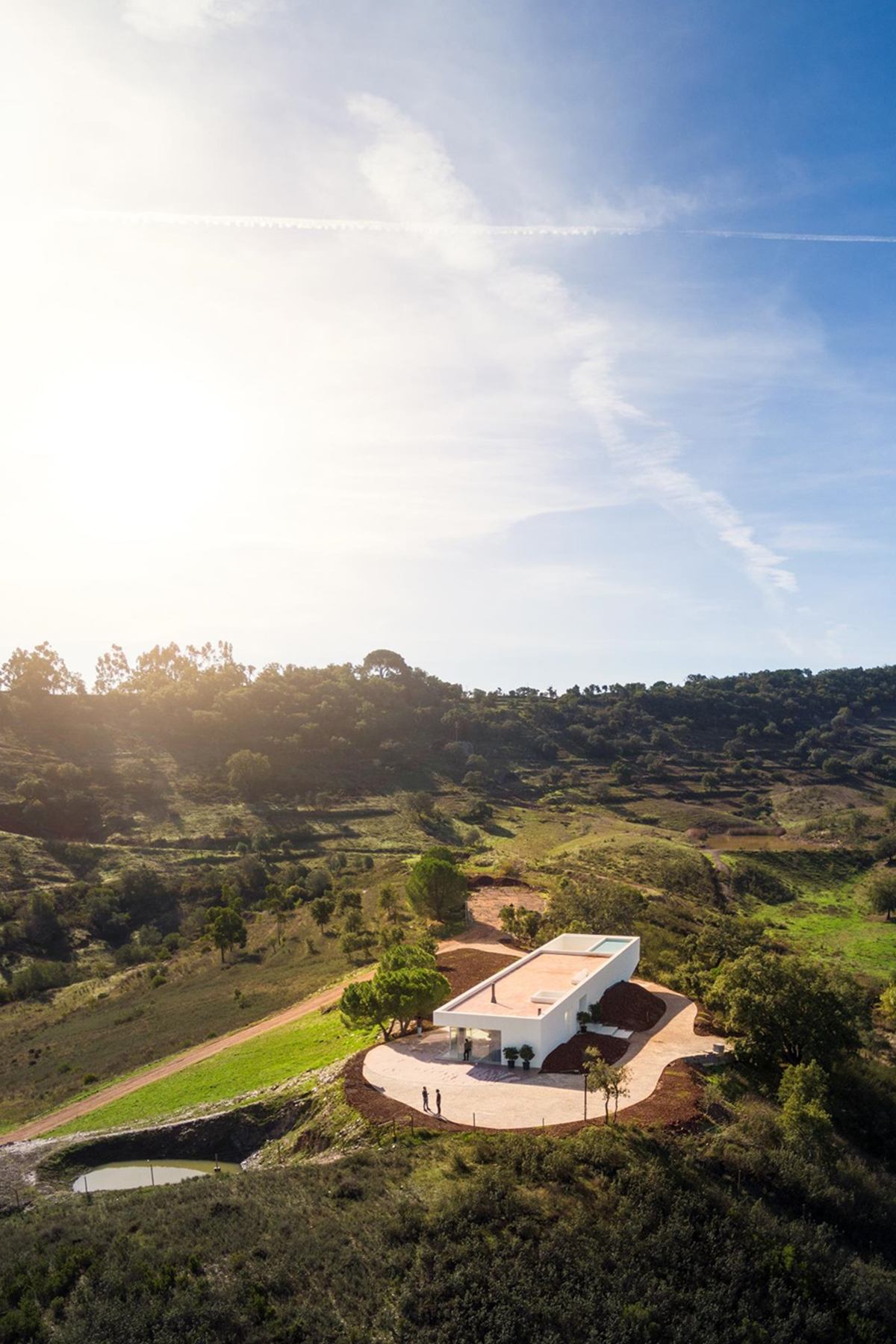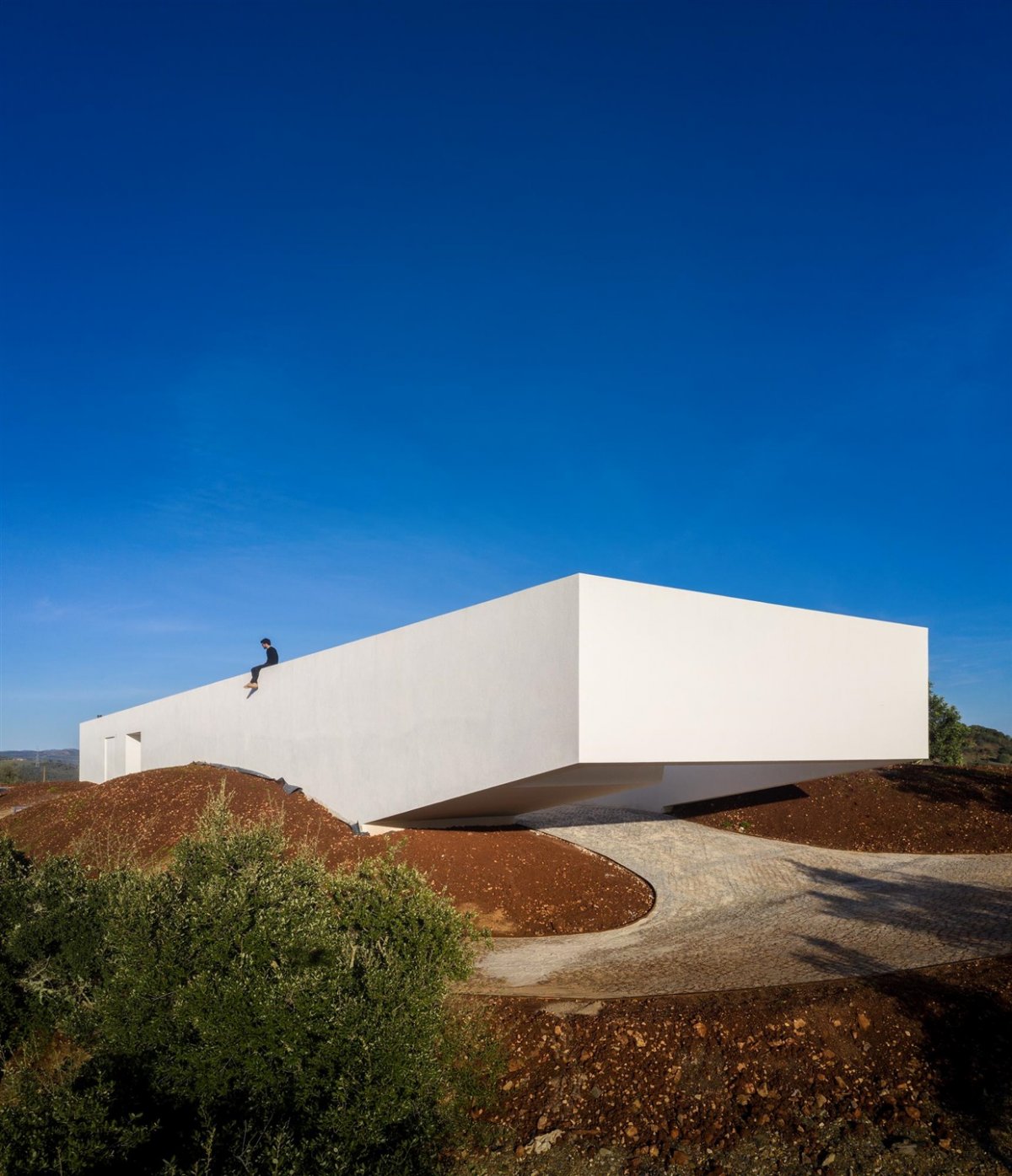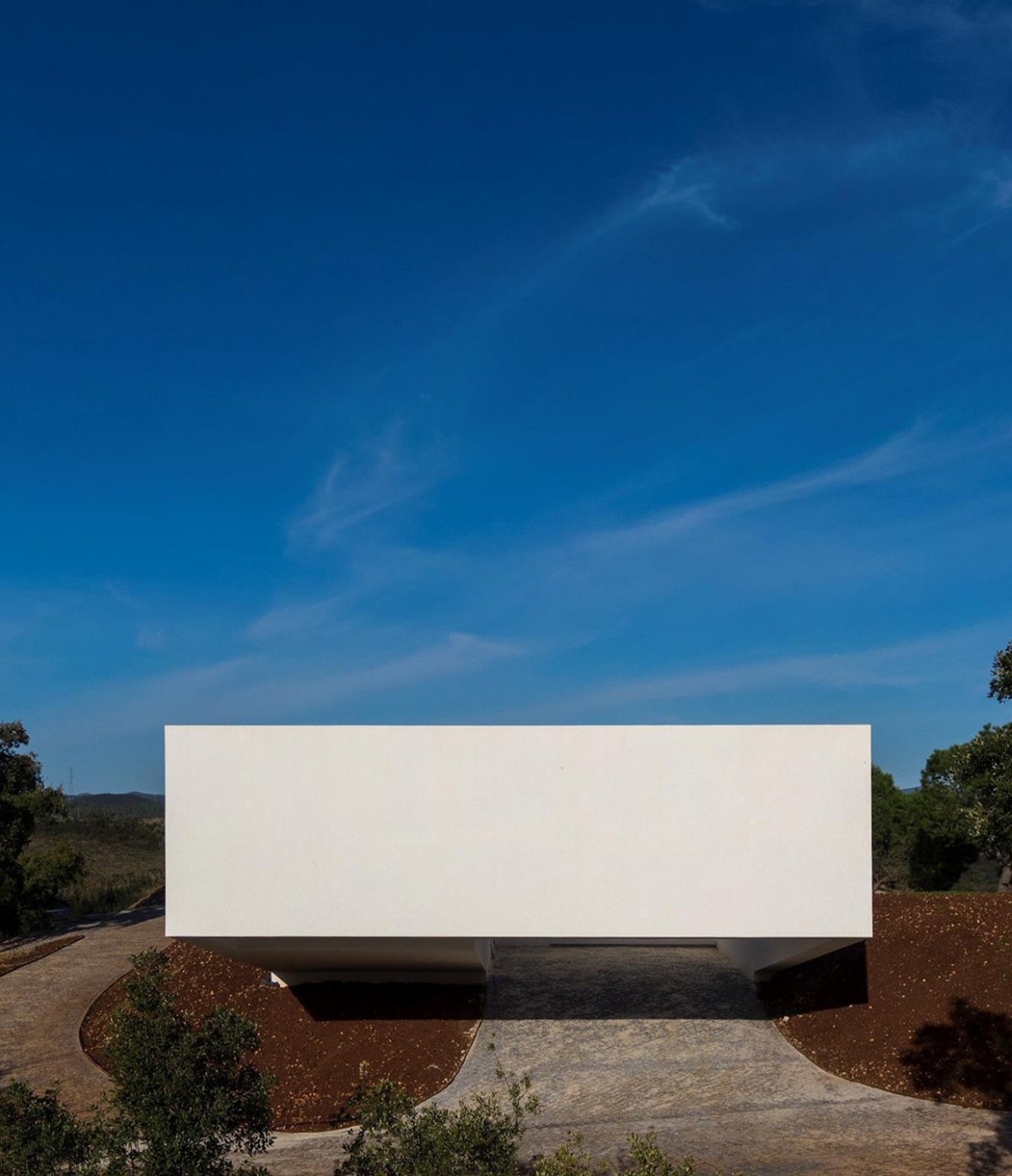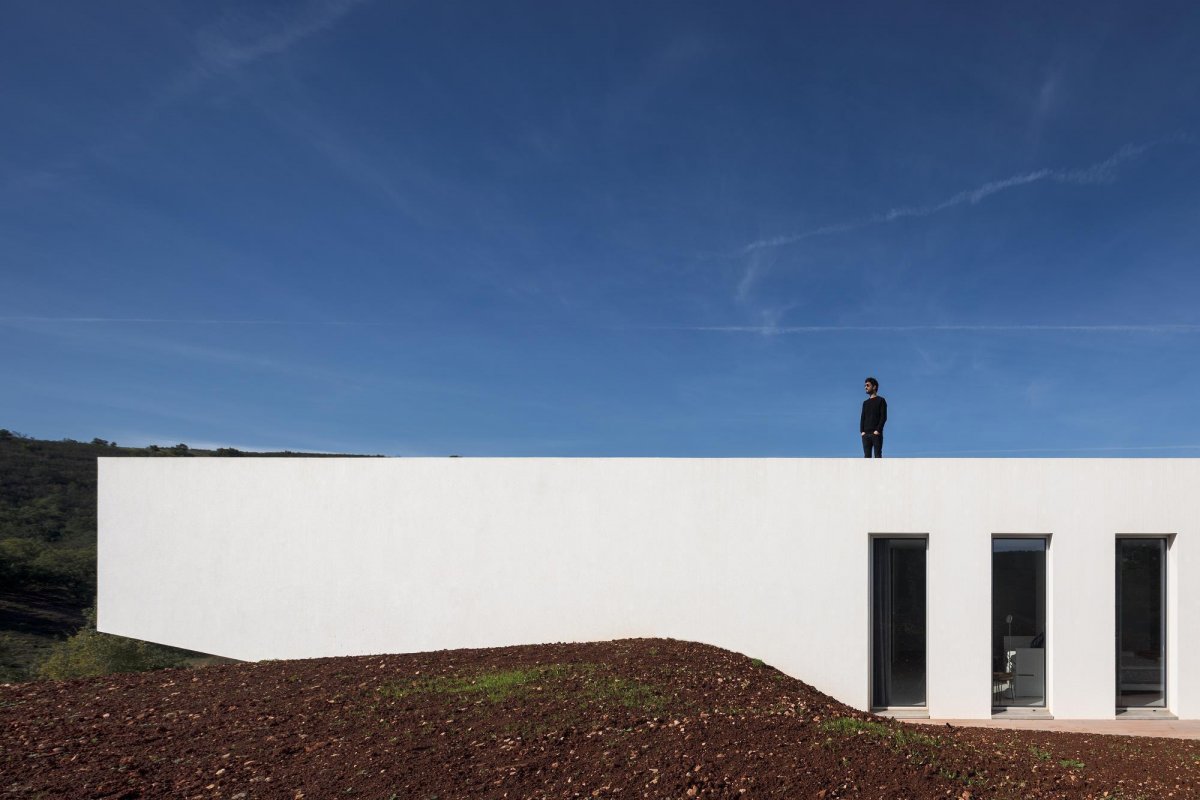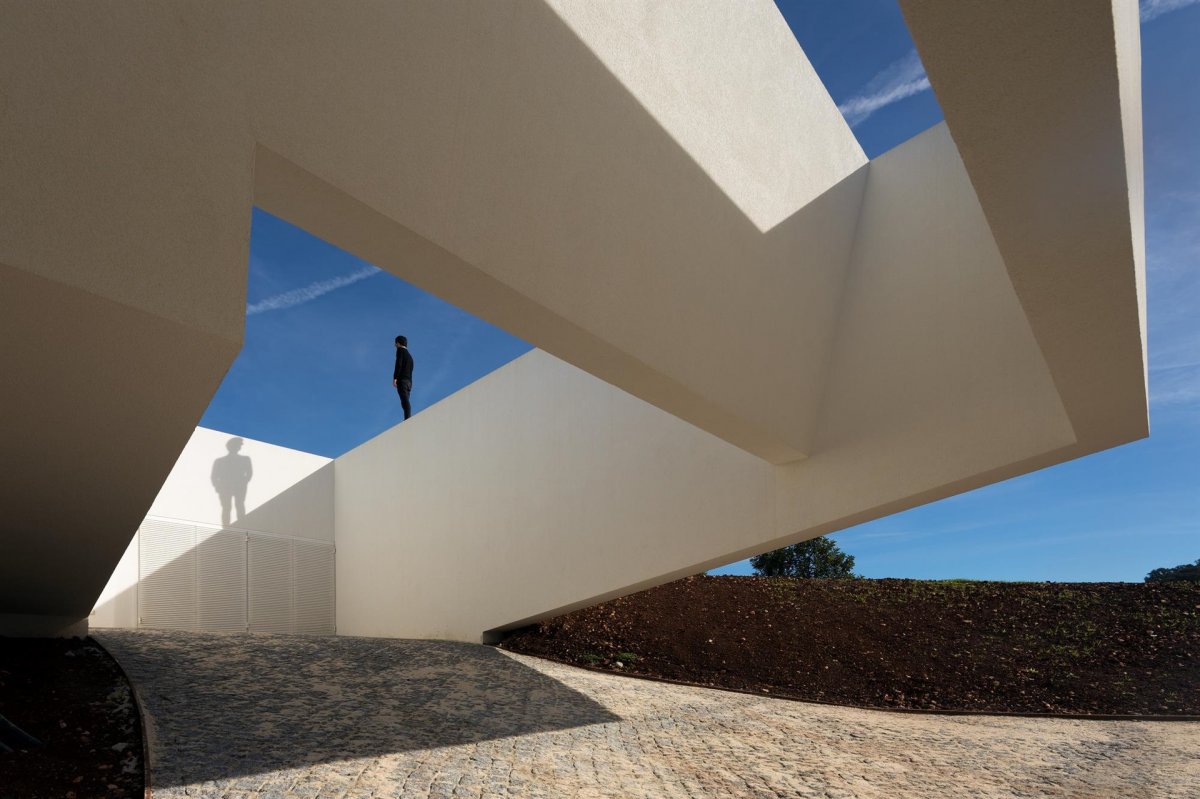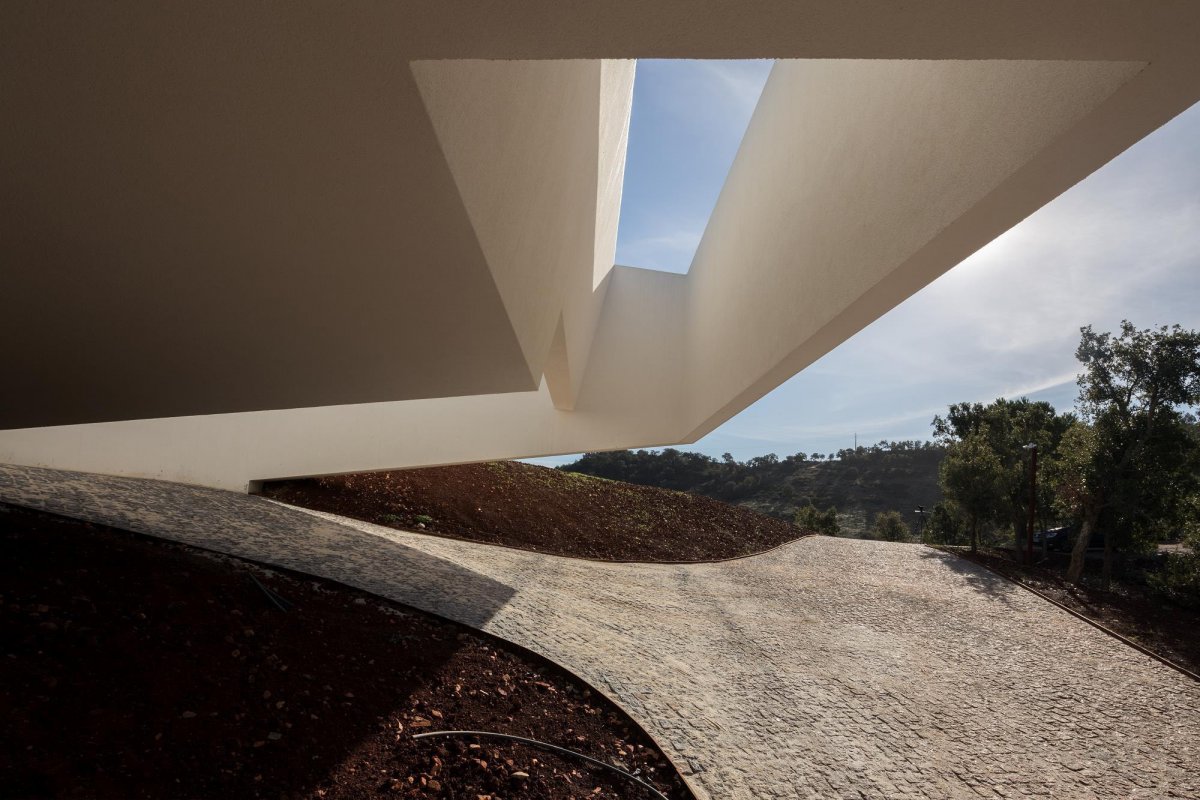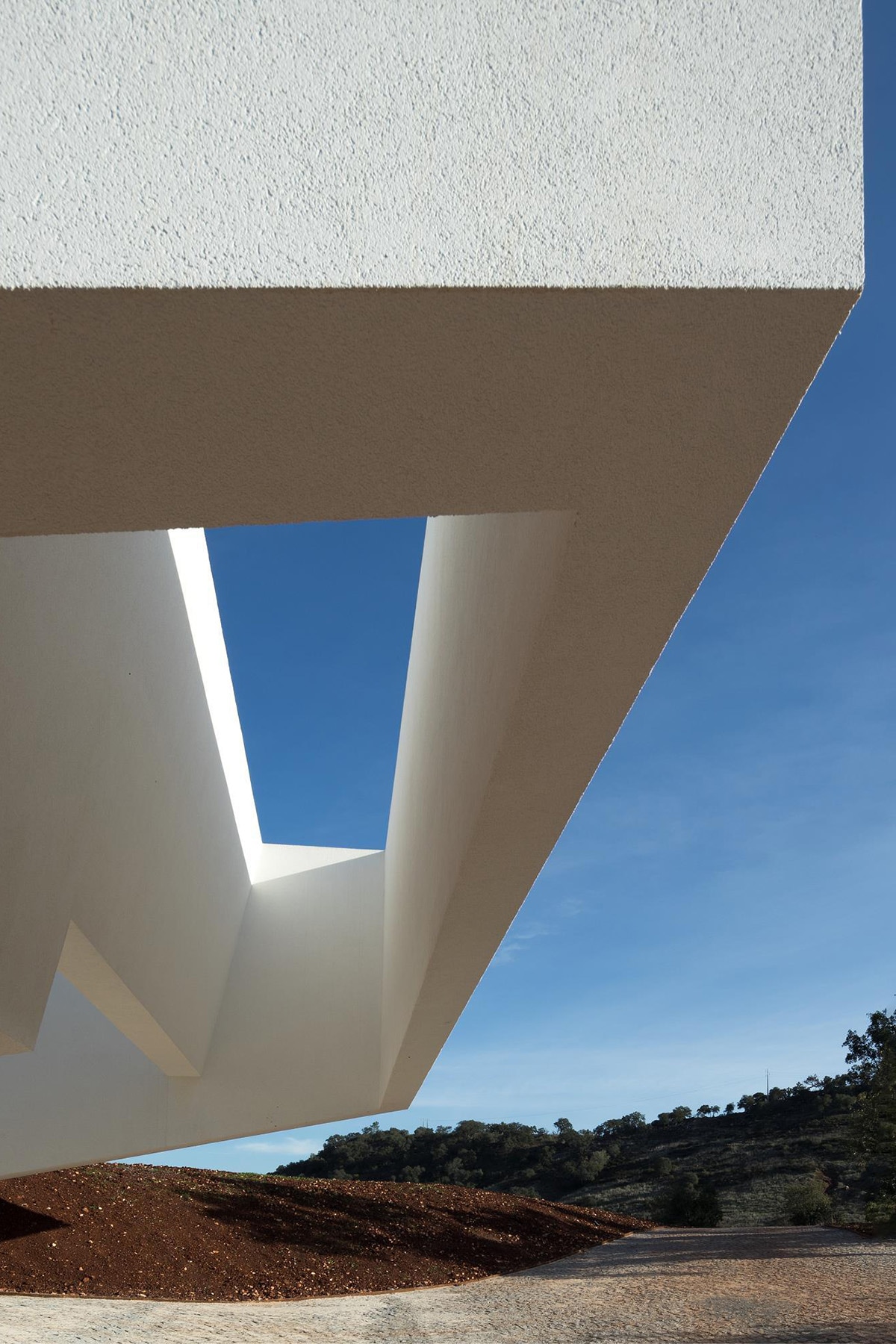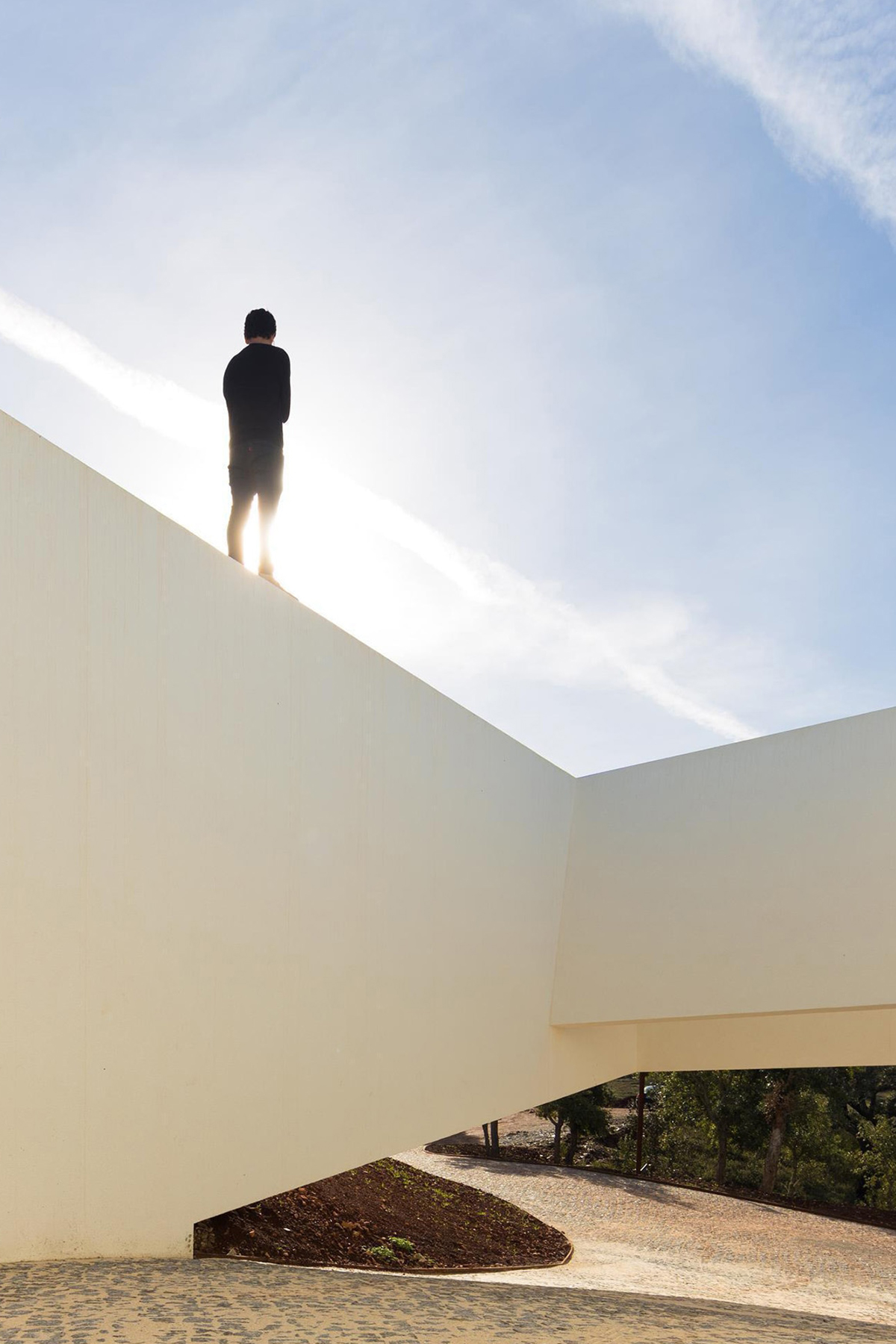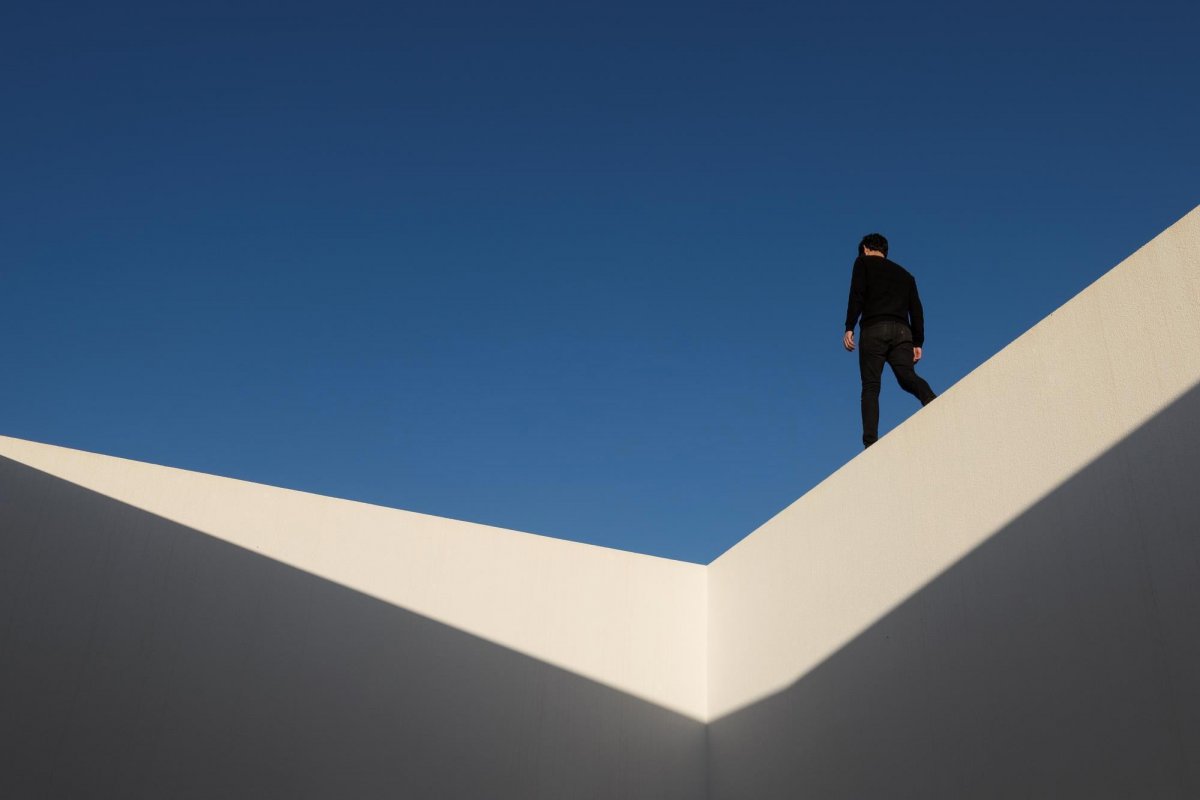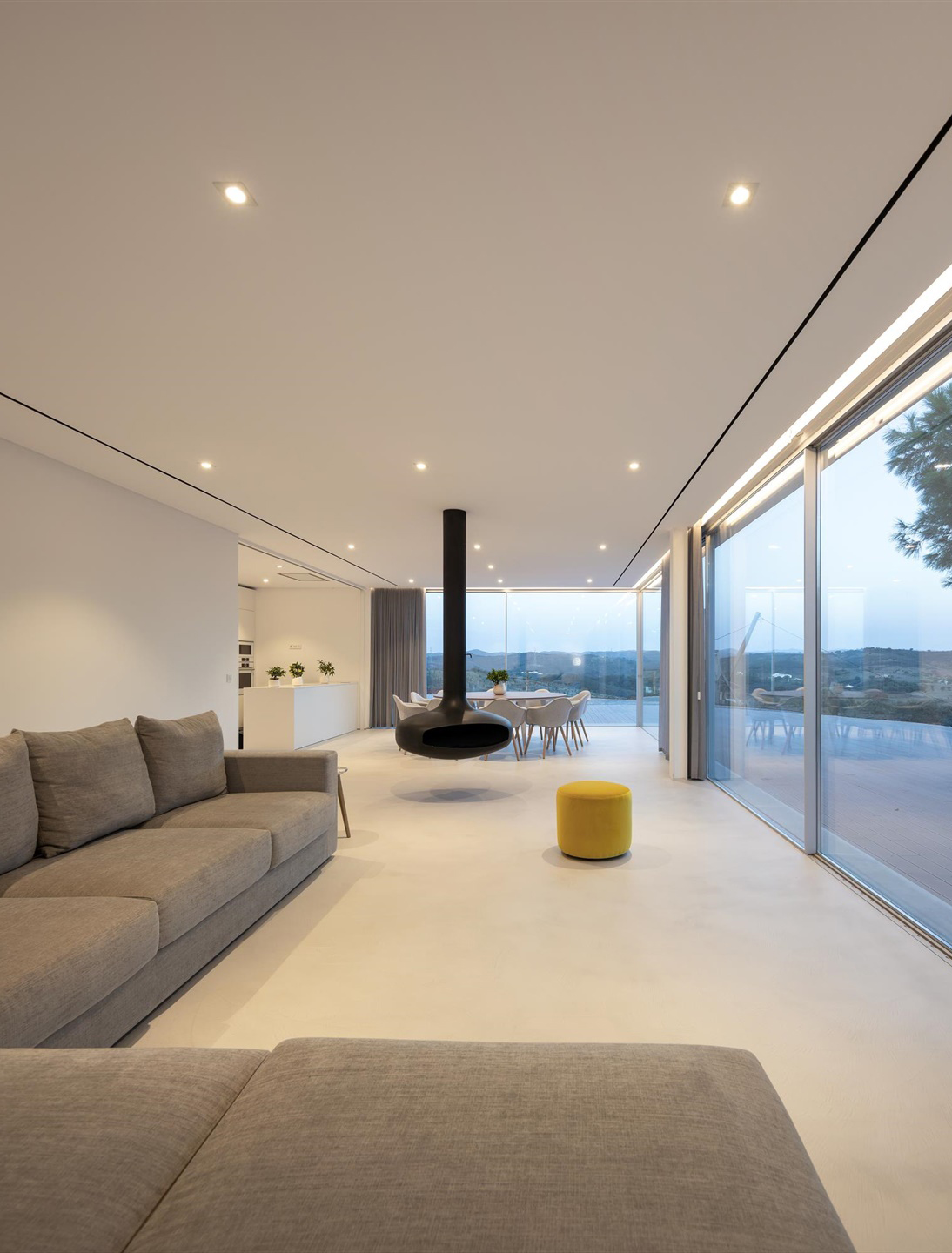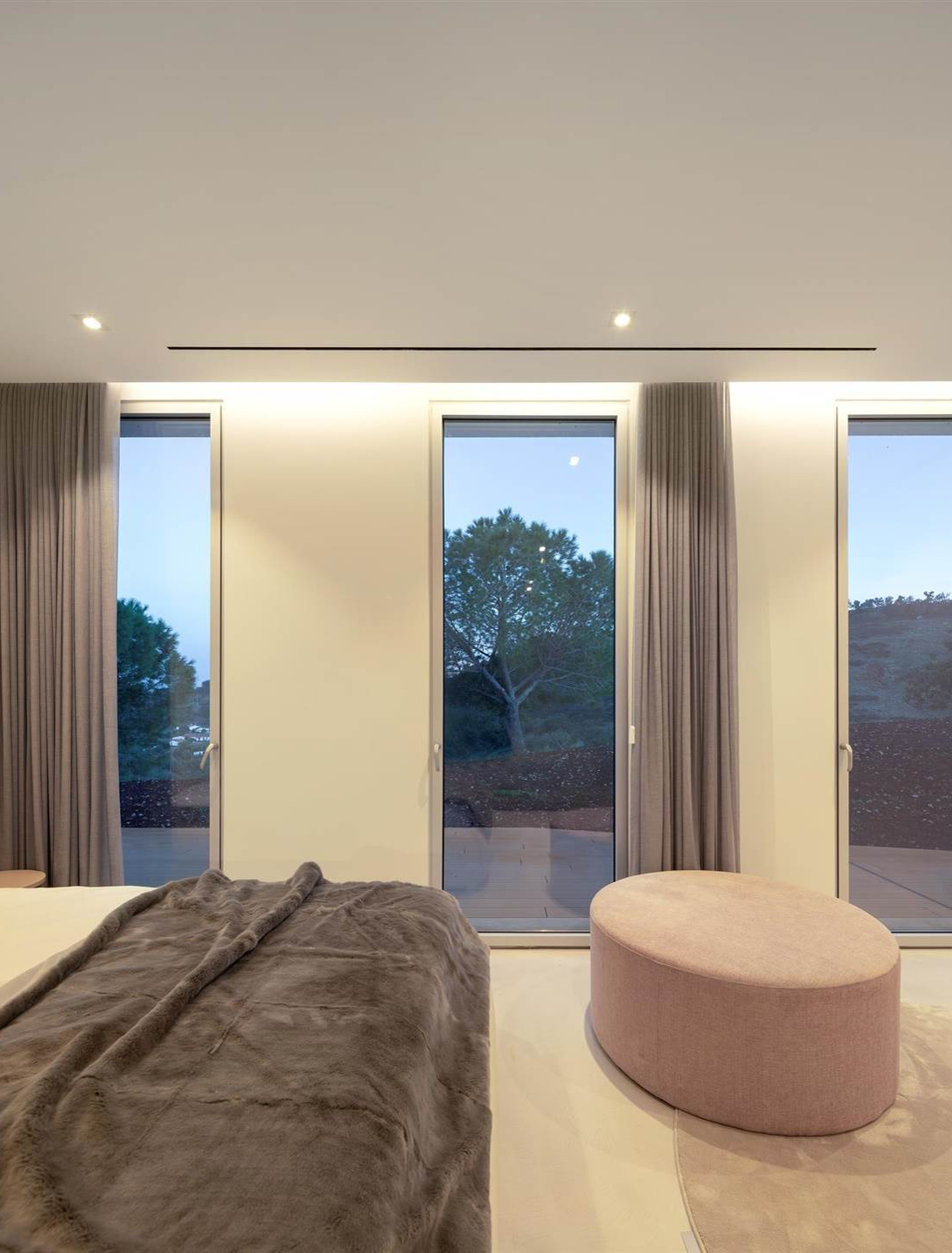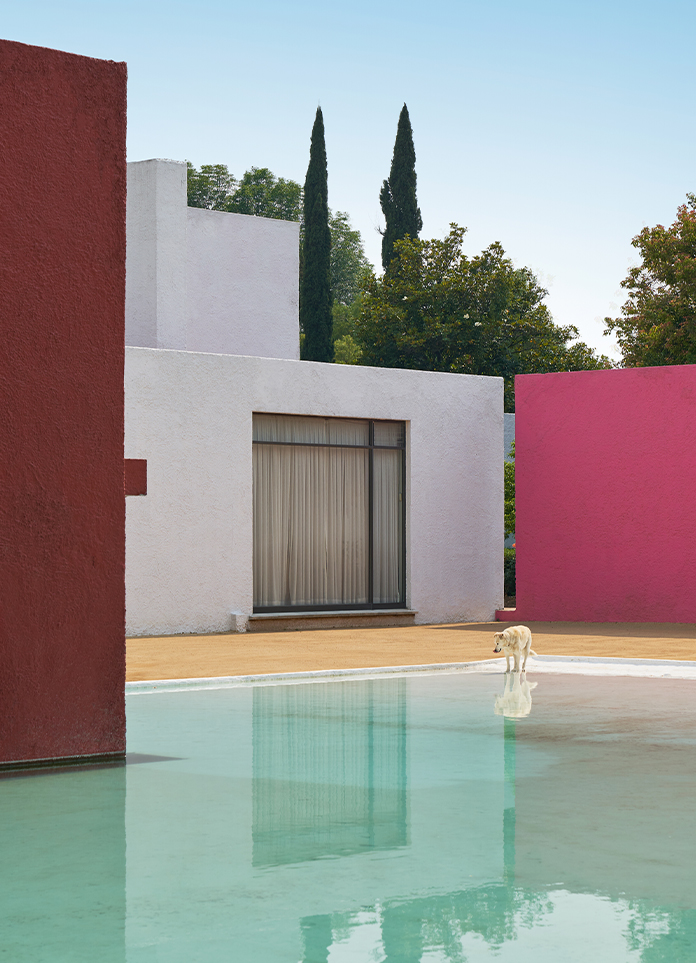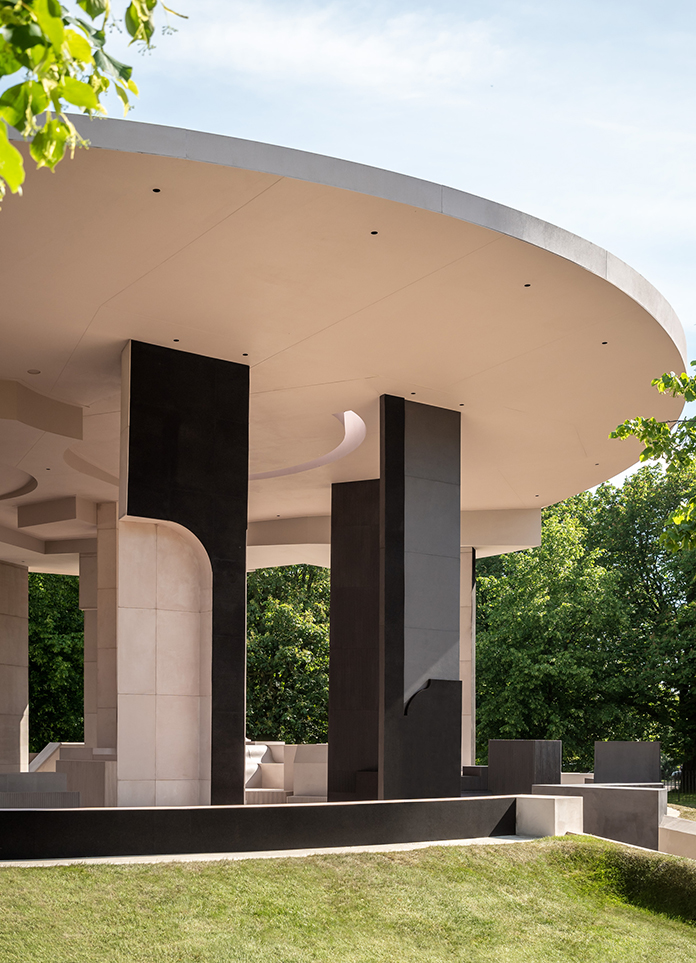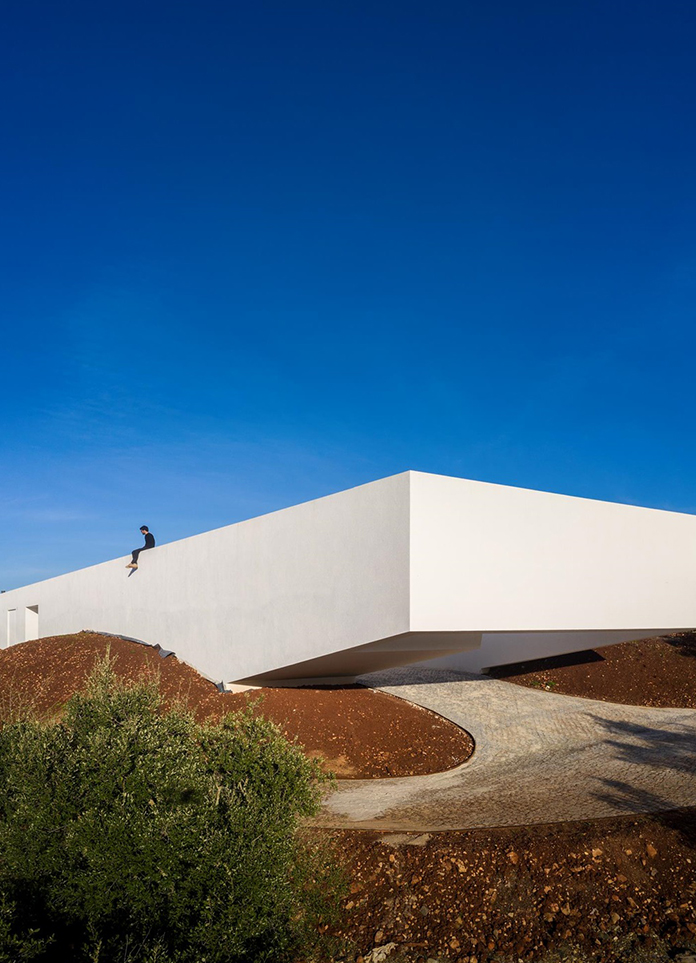
The scale figure is an important element in architecture representations. To juxtapose the human presence against a structure is not only to measure its proportions, but also to experimentally inject life to the project itself and deliver a spatial walkthrough for viewers that lack the accessibility to the space.
With the mindset of turning images of monumental architecture into humanist structures, House of Messines is often accompanied by a person in the photographs taken by Fernando Guerra. Situated in S?o Bartolomeu de Messines, Portugal and designed by Vitor Vilhena Architects, the residential project is a monolithic volume with geometric carvings. Rising out of lush hills and brown soil, its minimal white form toys with the rise and fall of the landscape topography, twisting the human occupancy in various elevations and positions.
Unseen, House of Messines is the result of an existing building. With the ghostly blueprints of the former arrangements, the architects were able to frame their design in the midst of mountainous and vibrant sceneries. Reflecting that vibrancy and countering the ruins, the human figure is introduced in images—even if singular and melancholic. Perhaps that organic feature even elevates carefully designed corners and openings.
While sole design determines a project’s identity, human inhabitants creates the project’s configuration. Therefore, representations are extremely important in communicating the architecture’s essence..
- Architect: Vitor Vilhena
- Photos: Fernando Guerra | FG+SG
- Words: Gina
